F5 Identity and Access Management Solutions > Archived Identity & Access Management Labs > 300 Series: Advanced Use Cases & Solutions Source | Edit on
Lab 2: SSL VPN SAML Authentication¶
Section 1.1 - Setup Lab Environment¶
To access your dedicated student lab environment, you will need a web browser and Remote Desktop Protocol (RDP) client software. The web browser will be used to access the Unified Demo Framework (UDF) Training Portal. The RDP client will be used to connect to the jumphost, where you will be able to access the BIG-IP management interfaces (HTTPS, SSH).
Click DEPLOYMENT located on the top left corner to display the environment
Click ACCESS next to jumphost.f5lab.local
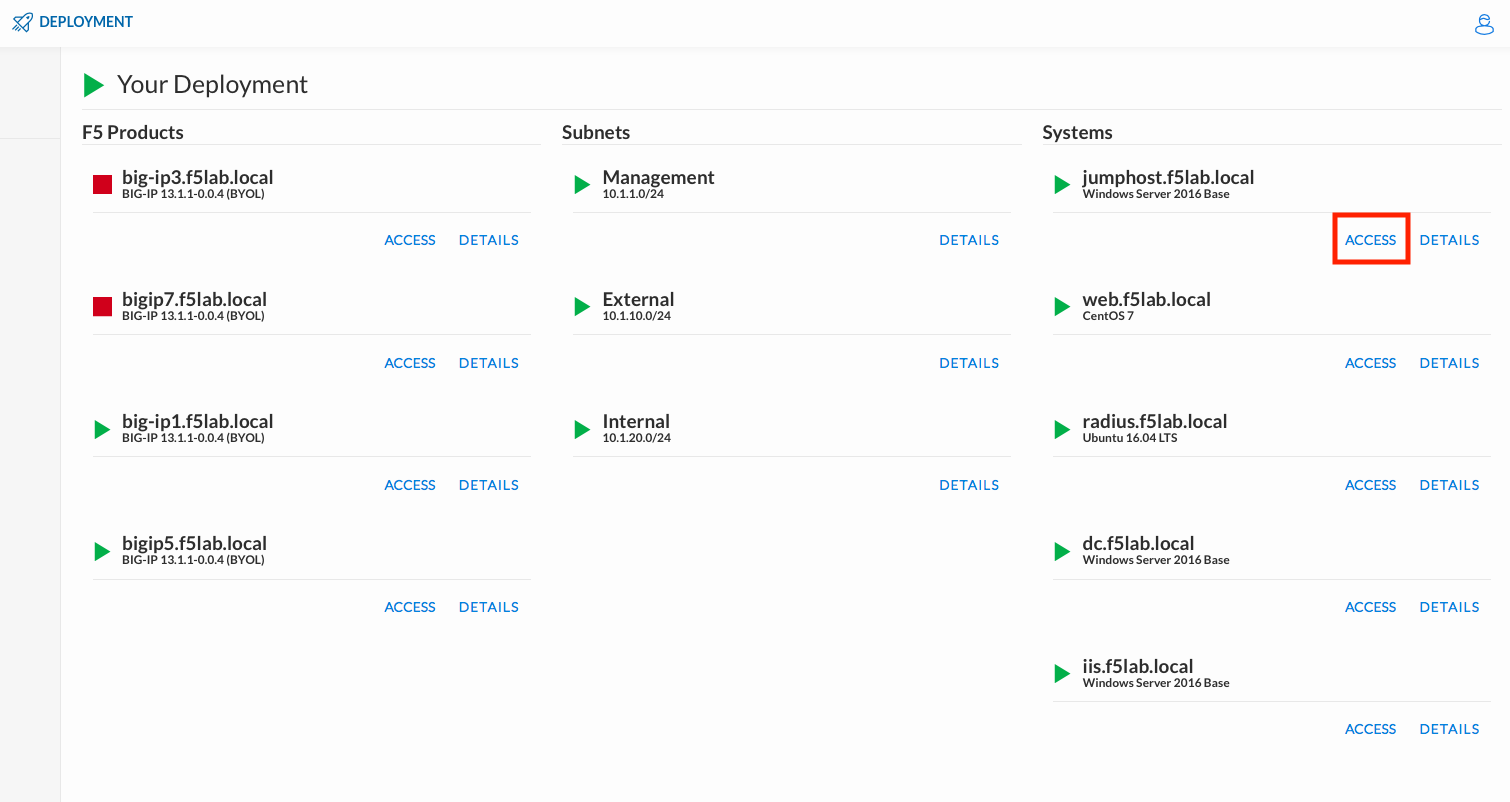
Select your RDP resolution.
The RDP client on your local host establishes a RDP connection to the jumphost.
Login with the following credentials:
- User: f5lab\user1
- Password: user1
After successful logon the Chrome browser will auto launch opening the site https://portal.f5lab.local. This process usually takes 30 seconds after logon.
Click the Classes tab at the top of the page.
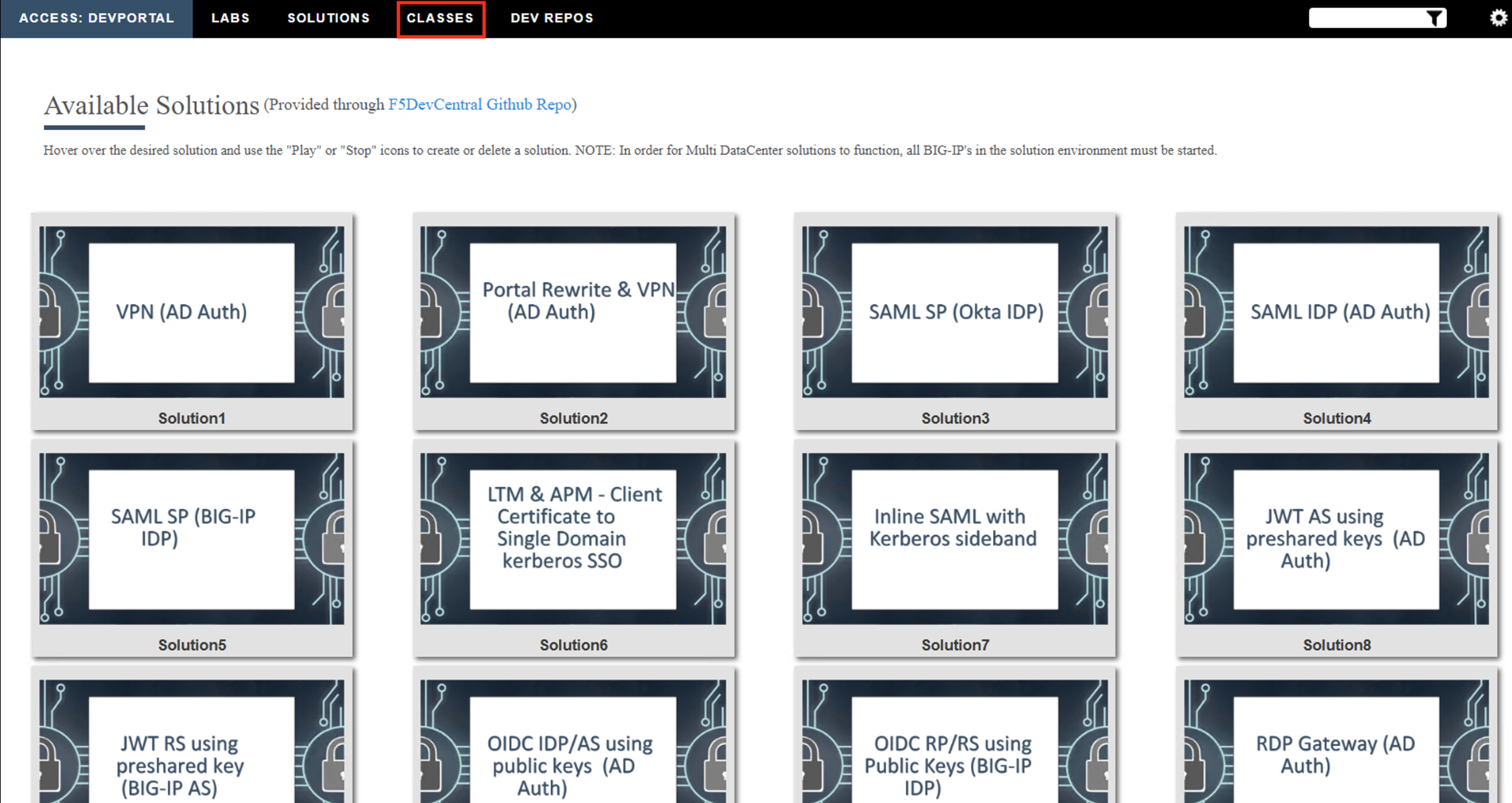
Scroll down the page until you see 309 SSL VPN on the left
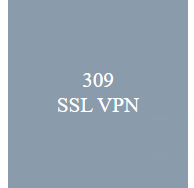
Hover over tile SSL VPN - SAML Authentication. A start and stop icon should appear within the tile. Click the Play Button to start the automation to build the environment
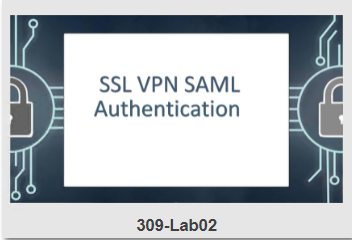

The screen should refresh displaying the progress of the automation within 30 seconds. Scroll to the bottom of the automation workflow to ensure all requests succeeded. If you experience errors try running the automation a second time or open an issue on the Access Labs Repo.
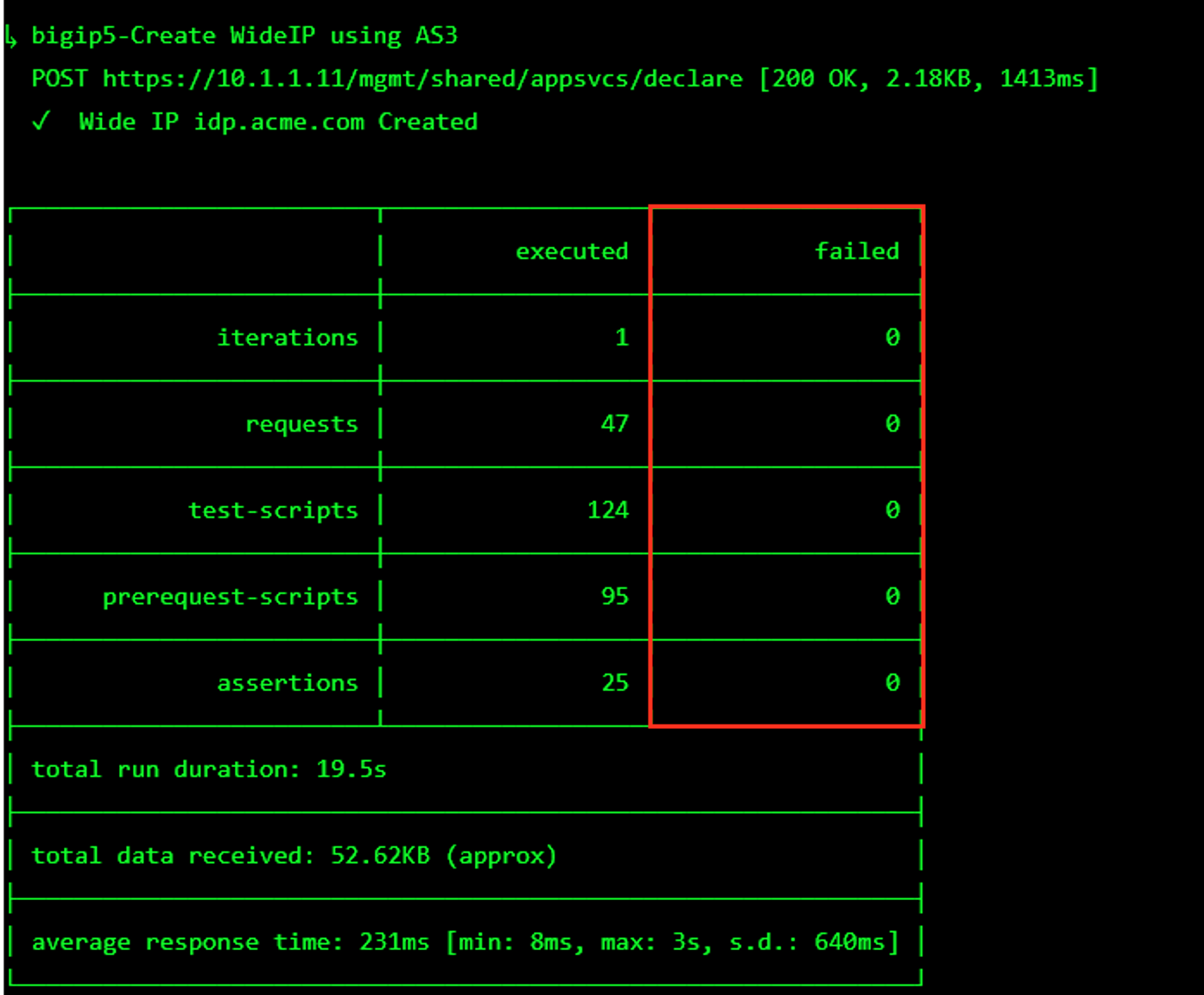
Task 1 - Review Network Access Components¶
Note
The network access components were built in Lab01 and have been recreated in Lab02
While in the jumphost, launch Chrome and click on the bigip1 bookmark.
Log in to bigip1.f5lab.local
- User: admin
- Password: admin
Navigate to Access –> Connectivity/VPN –> Network Access (VPN) –> Network Access Lists
Click the vpn-lab01-vpn network access resource
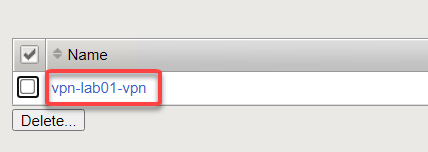
Click on the Network Settings tab
We are using the vpn-lab01-vpn_pool lease pool
Split tunneling is enabled for only the internal network traffic
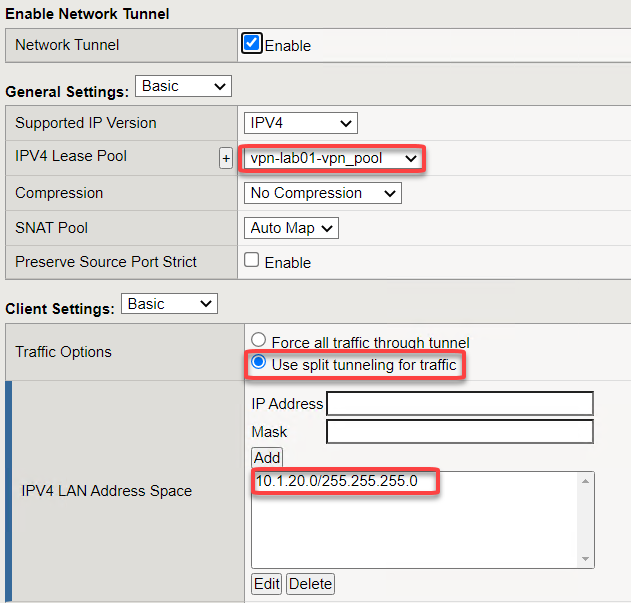
Note
For the purposes of this lab we are only going to use a single IP address for the lease pool. In a production environment you should set this range to as many as you need.
Navigate to Access –> Connectivity/VPN –> Connectivity –> Profiles
Click on vpn-lab01-cp then scroll to the bottom and click Edit
Profile name is /Common/vpn-lab01-cp and Parent Profile /Common/connectivity
Click OK
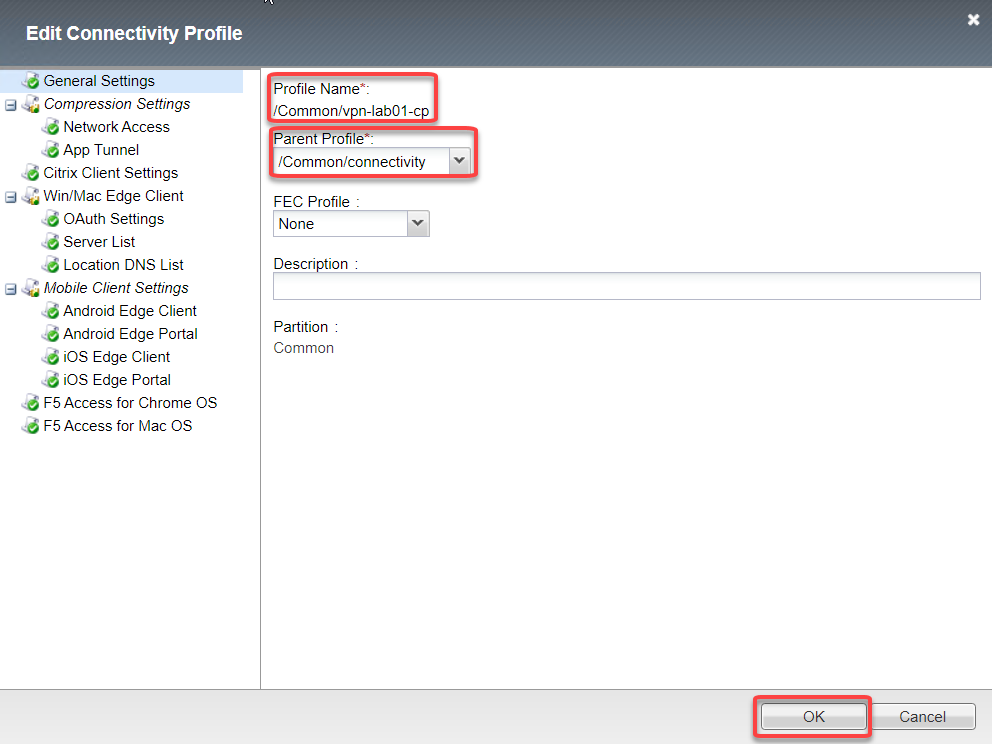
Navigate to Access –> Webtops –> Webtop Sections
Click vpn-lab01-network_access
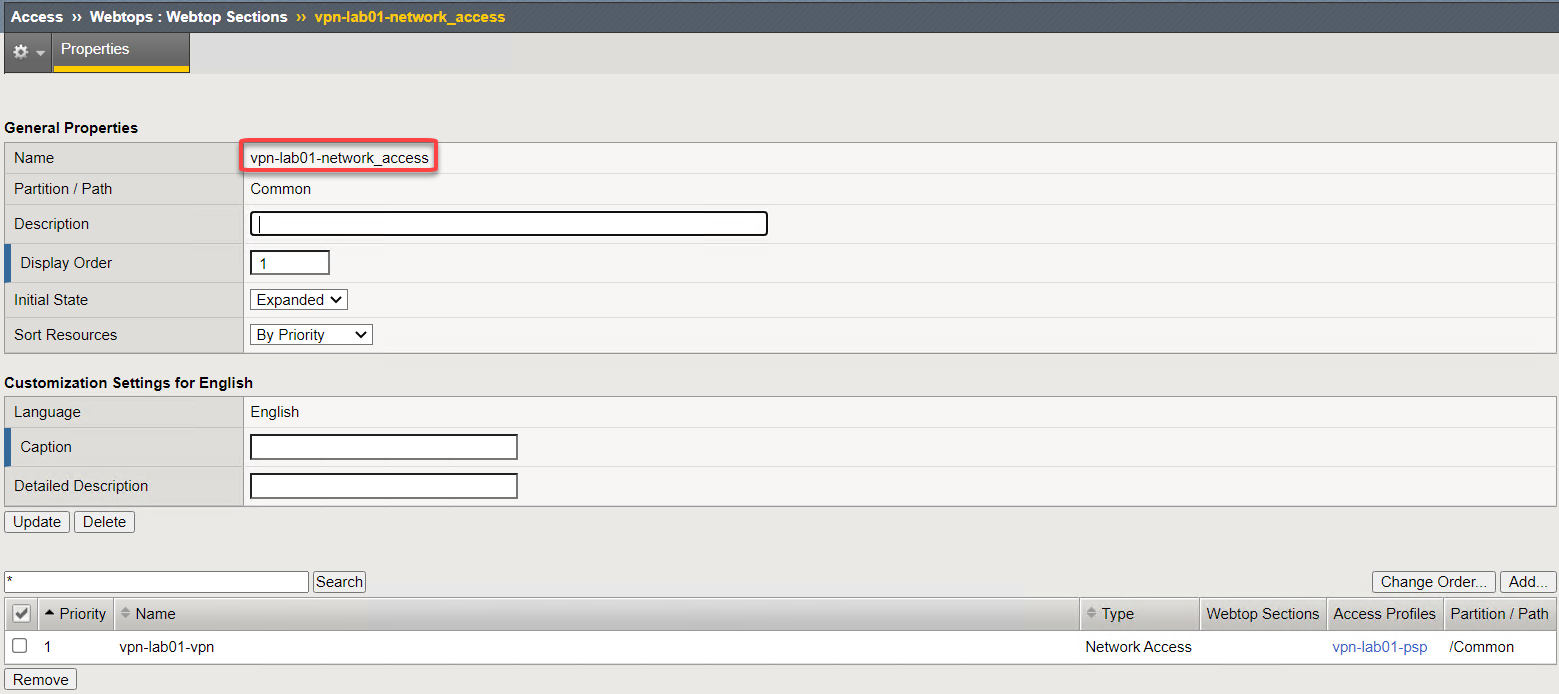
Navigate to Access –> Webtops –> Webtop Lists
Click vpn-lab01-webtop
This is a type Full and using Modern customization type.
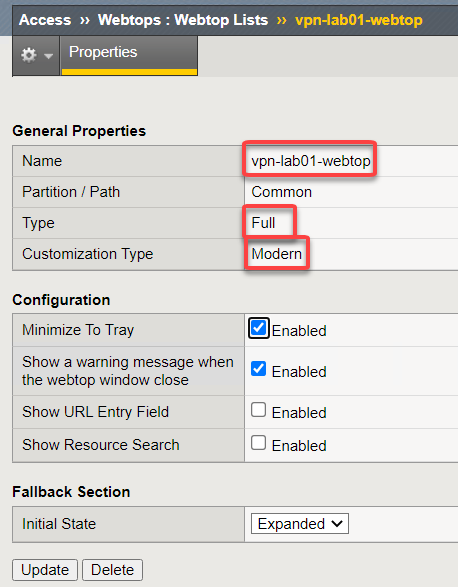
Task 2 - SAML Auth objects¶
Note
For the lab the objects needed in Azure AD have already been created for the Azure Tenant. For complete instructions on integrating Azure AD with SAML to APM SSL-VPN see: https://docs.microsoft.com/en-us/azure/active-directory/manage-apps/f5-aad-password-less-vpn
Navigate to Access –> Federation –> SAML Service Provider –> Local SP Services

Click Create from the far right
Give the local SP service a name and identify the entity ID
Note
The Entity ID is the fully qualified domain name (FQDN) of your application. This is the FQDN that was configured in the Azure Portal and will be the FQDN used to access the application or in this case vpn.
Name AAD_VPN_SP Entity ID https://sp.acme.com Host sp.acme.com Click OK
From the drop down menu under SAML Service Provider select External IDP Connector

Click on the drop down next to Create button and choose From Metadata
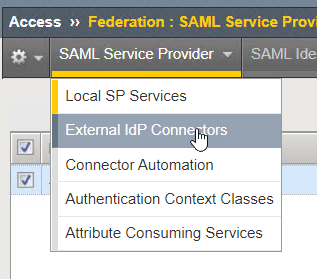
Click Browse from and choose the sp.acme.com.xml file
Click Open
Give this object a name AAD_SAML_IDP and Click OK
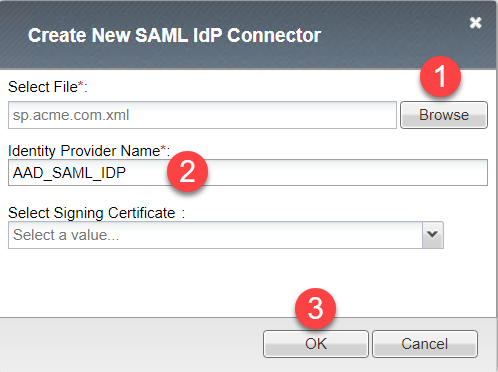
Click on the drop down menu for SAML Service Provider and select Local SP Services

Select the checkbox next to the AAD_VPN_SP object and click Bind/Unbind IdP Connector at the bottom of the screen (you may need to scroll down)
Click Add New Row select the AAD_SAML_IDP
Click Update
Click OK
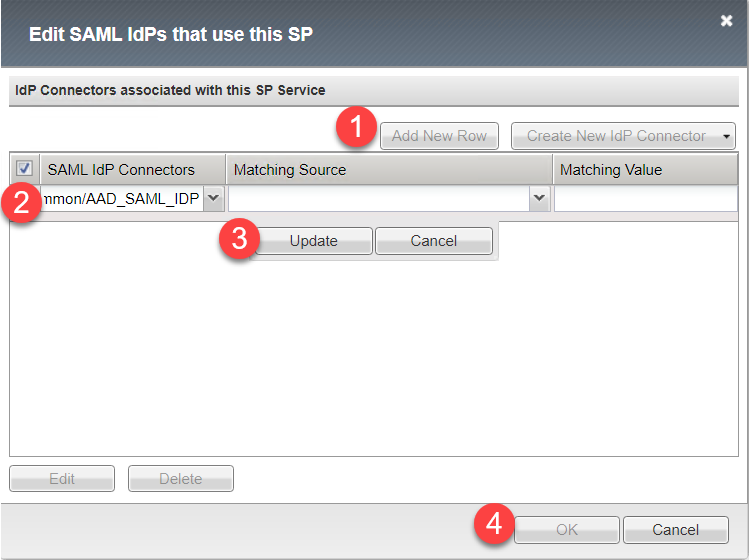
Task 3 - Per Session Access Policy¶
Navigate to Access –> Profiles/Policies –> Access Profiles (Per-Session Policies)
Click Create to create a new per session policy for VPN
Name vpn-lab02-psp Profile Type All Customization Type Modern Scroll to the bottom choose English from the right menu and slide move it to the left and click Finished
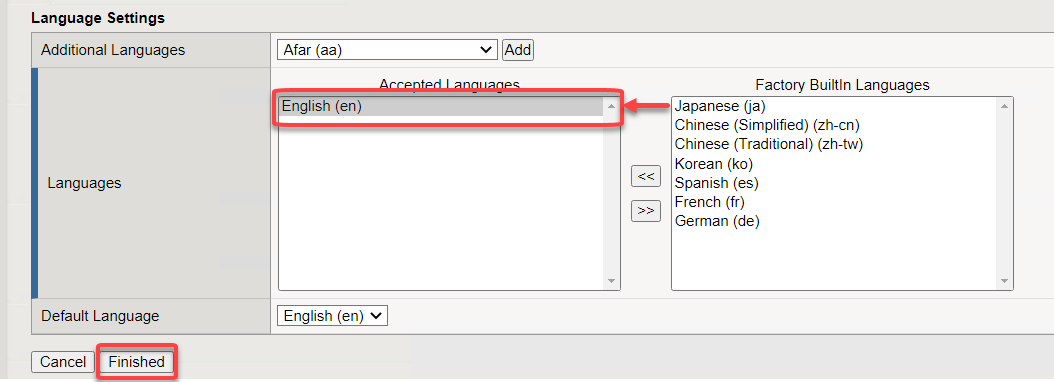
Locate profile vpn-lab02-psp and click on Edit. This opens the Visual Policy Editor (VPE) and we can take a look at the policy
Click the + between Start and Deny

Click on the Authentication tab, scroll to SAML Auth and click Add Item

Click the drop down next to AAA Server and choose /Common/AAD_VPN_SP then click Save

Click the + between SAML Auth and Deny on the Successful branch
Click the Assignment tab and choose Advanced Resource Assign then Add Item
Click Add new entry button then the Add/Delete link
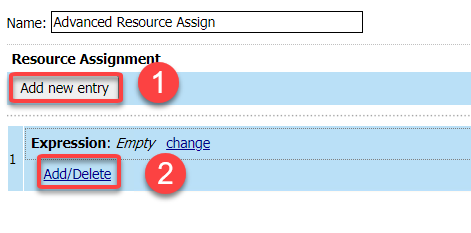
Click the Network Acces tab and choose the object, then the Webtop tab, then the webtop setion.
Click Update
Click Save
Click the Deny end point on the fallback branch from from Advanced Resource Assign*. Choose Allow and Save

Click Apply Access Policy

Task 4 - Apply Policy and profiles to Virtual Server¶
Navigate to Local Traffic –> Virtual Servers –> Virtual Server List
From the Partition menu in the upper right choose vpn-lab01
Click on vpn-lab01 Virtual Server
Scroll down to the Access Policy section
Select the vpn-lab02-psp from the Access Profile drop down menu
Click the drop down for “”Connectivity Profle** and choose the vpn-lab01-cp from the menu
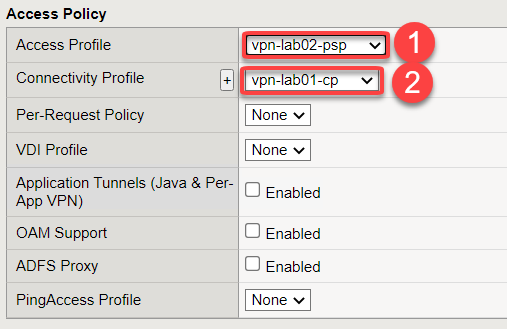
Scroll down and click Update*
Task 4 - Test VPN Access¶
The connects to https://sp.acme.com with the following credentials
Username: user1@f5access.onmicrosoft.com Password: F5twister$ 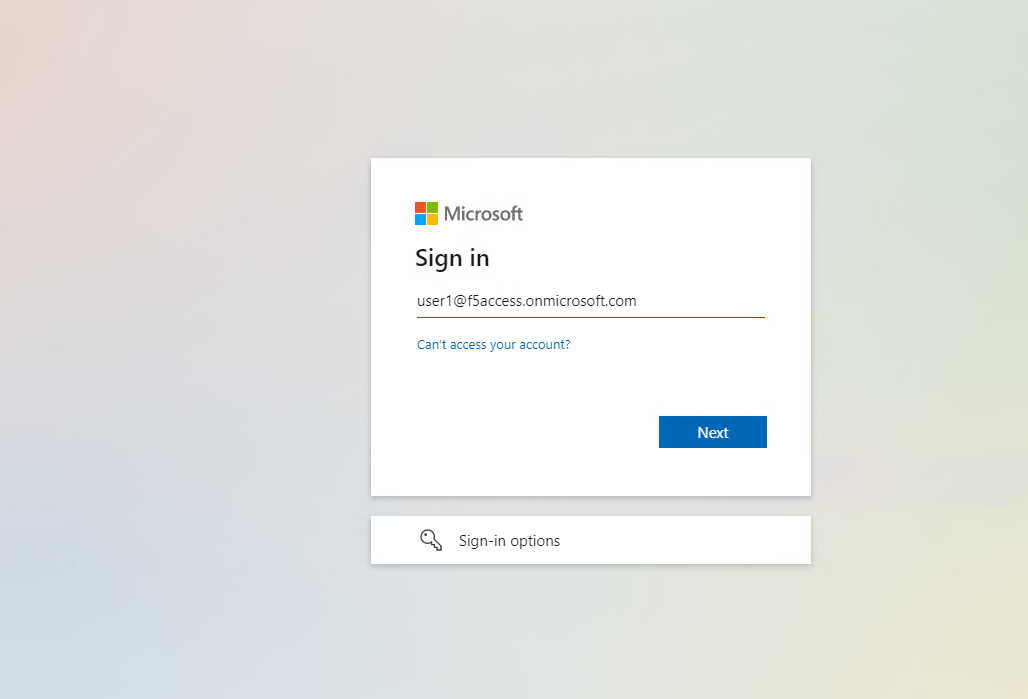
Click Next and enter the password and click Sign in* then **Yes
Once authenticated the user is presented a Webtop with a single VPN icon.
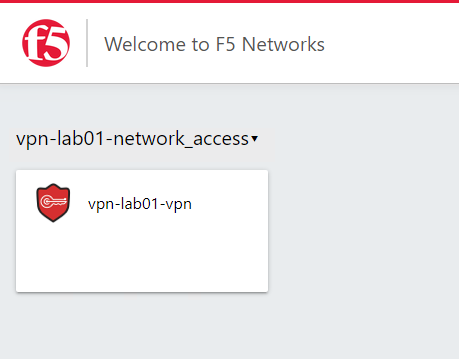
Assuming the VPN has already been installed the user is notified that the client is attempting to start

Note
You may be prompted to download the VPN update. This is what a user will experience if you have auto-update enabled in the VPN Connectivity Profile. Click Download and wait for the components to update.
A popup opens displaying the status of the VPN connection. The status will eventually become Connected
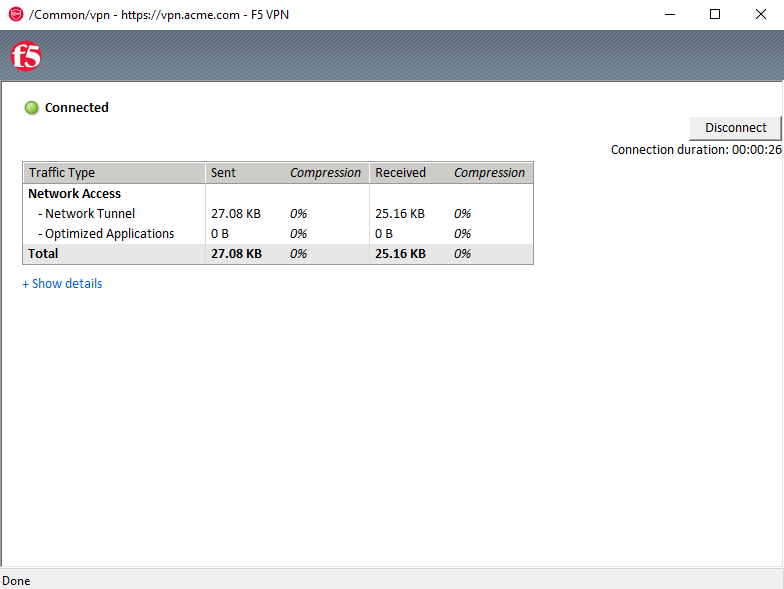
Note
If you lose the pop-up check the system tray for the little red ball. Right click and choose restore
Click Disconnect